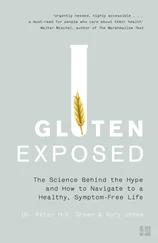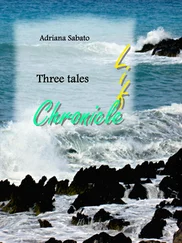Dr. Zoya then led me to the critical unit ( reanimatsiia ). Like any other guest, I was given a white overcoat to wear during the visit. In a corridor we passed a young affluent couple—the new Ukrainians, or “the new rich”—waiting for a nurse to finish swaddling their newborn infant. We entered the critical unit. Six newborns in German-donated Plexiglas incubators were visible. The transparent boxes were separated and arranged so as to give ample walking space for visitors. The physical state of the infants varied. As we walked, Dr. Zoya described their deformities. My notes say, “One born premature, another survived the death of his twin; another born with a dysfunctional esophagus; another with signs of prenatal asphyxiation. One born to a mother who at age nine was evacuated from the Chernobyl zones; her infant has half a lung. Another was born to a Chernobyl worker: there are six fingers on his left hand. He’s missing a trachea. His gut lay on the outside of his body. His left outer ear is gnarled and deformed.” It was as if something internal to the gestational process had been left unfinished by Chernobyl. Life was obstructed, and the forms of that obstruction lay bare.
A few weeks later, I spoke on the telephone with a U.S. embassy worker who told me she had personally arranged for Warren Christopher, then U.S. secretary of state, to visit that same critical unit (the goal of his trip was further reductions of Ukraine’s nuclear arsenal). This embassy worker said she had “arranged every step,” and that “the director of the hospital decided that all the displayed babies would have Chernobyl in their family histories.” She said, “It always helps Ukraine when politicians see these Chernobyl children up close.”
The display of these infants stressed Chernobyl’s core issue: the destruction of human life. That issue was also at the core of a political economy and administrative apparatus that attempted to evoke public recognition of the disaster’s pathological facts. These bodies bore Chernobyl histories. They were also vectors of Chernobyl destinies that touched both individual families and this society as a whole. In that space where the neonatologist led me, there was no—and there should not have been any—resistance to these new facts of life. The state used biological images such these not only to project to the world its image as victim but to justify its own sovereignty. Such images reminded viewers of the cause of physical suffering. Out of the mire and mess of the Soviet mismanagement of Chernobyl had come a dreadful accumulation of diverse malformations such as these. Now it is through such images that a society is struggling with the price of its health. And, meanwhile, citizens must rely on their disease, and the knowledge they accumulate about it, as the currency through which they negotiate social, economic, and political survival.
A Technogenic Catastrophe
The scale of the Chernobyl aftermath and its long-term health effects have been subjects of intense dispute and controversy. International scientific organizations insist that contamination from the Chernobyl reactor has been successfully contained, but argue the need for ongoing technical surveillance and for continual informational exchange (IAEA 1991, “Chernobyl’s Legacy” 1996). The UN Scientific Committee on the Effects of Atomic Radiation, which relies on data from the International Atomic Energy Agency, has acknowledged the sudden increase in thyroid cancers among children living in affected territories. Along with international biomedical and social scientific literatures, these agencies have characterized most other disorders as products of “informational stress” (Sergeev 1988, WHO 1996), “somatization of fear” (Rumiantseva et al. 1996, Guskova 1995), or lack of proper “risk perception” (Drottz-Sjoberg 1995, Havenaar et al. 1996). Ukrainian scientists and clinicians acknowledge rampant stress among affected populations but have criticized international health assessments for ignoring the contribution radiation makes—even in low doses—to adverse physiological change (Pilinskaya 1999, Bondar et al. 1996).
Much of the disagreement between UN-related and local scientists centers on the significance of proven versus expected health outcomes. Based on studies conducted after Hiroshima and Nagasaki, an “excess” of 6,600 cancer deaths, including 470 leukemia cases, were expected. Other Japan-based studies on incidence and mortality of cancer indicate that the risk of disease varies according to cancer type. The highest risk is observed for leukemia, breast cancer, thyroid cancer, and lung cancer, as well as some cancers of the gastrointestinal tract. There is considerable disagreement between UN-affiliated scientists and their counterparts in Ukraine and Belarus regarding Chernobyl-related cancer rates. Leukemia estimates in particular vary widely. While UN agencies do not recognize rises in leukemia rates, Prysyazhnyuk et al. indicate the standardized incidence ratio (SIR) for leukemia to have increased significantly among the most heavily exposed cleanup workers in Ukraine (1999). A team of Belarussian physicians claims that leukemia rates are four times the Belarussian national average among the most heavily exposed cleanup workers (Pearce 2000:12). [15] Yet even this view is contradicted within Belarus. The director of the Research and Clinical Institute of Radiation Medicine and Endocrinology in Minsk indicated that “perhaps the biggest surprise in the first few years after the explosion was that a spate of leukemia cases, predicted from Japanese atom bomb survivor studies, never materialized.” See Stone 2001.
Gennady Lazjuk of the Institute for Hereditary Diseases in Minsk, along with collaborators in Japan and Europe, found that radiation exposure accounted for a 12 percent increase in birth defects in heavily contaminated areas in Belarus (Lazjuk et al. 2000). Notwithstanding the recognized increase in thyroid cancers in children, the International Atomic Energy Agency and the UN Scientific Committee on the Effects of Atomic Radiation have not acknowledged increases in cancers and congenital deformities, both of which have been anticipated on the basis of research on Hiroshima and Nagasaki bombing survivors (Pierce et al. 1996).
UN scientists and local experts also disagree over where research emphasis should be placed, or at what level biological changes should be detected. Human radiation effects vary according to whether they are deterministic or stochastic. Deterministic effects occur when levels of absorbed radiation doses are significant enough to kill cells that, if not adequately replaced, produce clinically observable pathologies. The severity of the effect is dependent on the radiation dose, with steep linear dose-effect relationships. This is opposed to stochastic effects, which, based on gene damage, confer a probability or chance that a harmful outcome will develop. In contrast with deterministic effects, stochastic effects are nonlinear in terms of the kinds of harm they can produce, but are most commonly associated with cancer and leukemia induction. Unlike deterministic effects, they increase the probability rather than the severity of a given pathology (Gofman 1981:708). Recent collaborations among post-Soviet and Western scientists, some of whom are unaffiliated with international radiological committees and agencies, have yielded new data related to stochastic effects. Using techniques far more sophisticated than those available at the time of the Hiroshima and Nagasaki studies, researchers have shown increases in human germline alterations under conditions of chronic exposure to low-dose irradiation among children born in 1994 in Mogilev, Belarus, in comparison with a control population in Britain (Dubrova et al. 1996). Others have noted significant increases in the frequency of chromosomal aberrations and other genetic markers of radiation effects in children living in contaminated areas (Pilinskaya and Dibskyi 2000). Clearly, the science of the human health effects of Chernobyl is an evolving one. As new technologies and research funds become available, new fields of knowledge are established. But at the present moment, what we know of the precise figures of damage is far from complete.
Читать дальше












